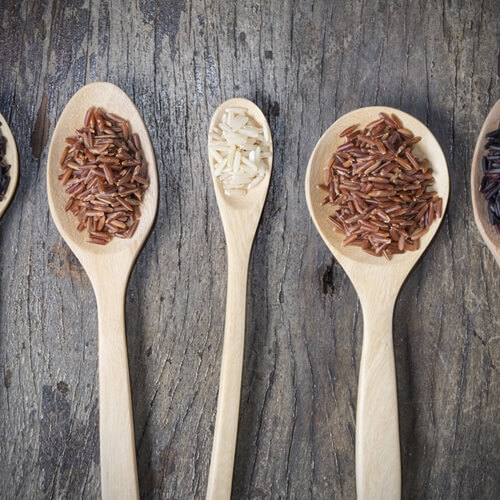Properly Prepare Your Grains
Chances are, you’ve grown a little tired of preparing rice as your side dish. No matter what kinds of sauces or seasonings you use, rice will always be well … rice. If you’re a culinary academy student, you’re probably open to trying new dishes, even if you have never heard of them before. While most of your recipes probably focus on your main course, side dishes are also important, and grains are a staple side. These are some grains you may have never cooked with before and ways to try them:
Buckwheat: Buckwheat is highly versatile and most commonly used in baking. Though it isn’t technically a grain (it’s actually related to rhubarb), its nutritional content, flavor and appearance has allowed buckwheat to be employed like a grain in cooking anyway. It is gluten-free, so it’s become a favorite among people with Celiac disease.
Bulgur: Bulgur may not sound like the most appetizing name to some, so it’s also known as cracked wheat. Made with hard, soft, red or white wheat, it’s quick to boil or soak. Consequently, it makes a good addition to stews, salads or pilafs. Bulgur is a staple in many Middle Eastern recipes. It isn’t gluten-free, but it’s high in fiber.
Farro: Farro is an ancient Italian strain of wheat. It’s grown in Austria, southern France, Germany and some eastern European countries. It’s full of protein, phosphorus, potassium and beta-carotene. Farro makes a good addition to salads and stir fries.
Kamut: This form of wheat is always organic – it’s actually trademarked – and was discovered in Egypt, though it’s now grown here in the United States. It’s prepared in many ways, from being ground into flour to being cracked, rolled, flaked or puffed. Kamut’s high in protein and vitamin E and has a bit of a sweet taste, so it’s best for baking.
Millet: Millet is a gluten-free grain that is infrequently eaten in the United States, though it’s a staple in India, China, South America, Russia and the Himalayas. It’s used in cooking and baking, and has been fermented to create alcoholic beverages. There are five different strains of this grain, known as pearl millet, foxtail millet, proso millet, ragi and fonio.
Polenta: Polenta is made up of ground corn. It’s ground more coarsely than cornmeal and originates in northern Italy. Sometimes the name “polenta” is also used for the porridge made from it. Since it’s ground so coarsely, it takes longer to cook than cornmeal.
Sorghum: Sorghum is an incredibly versatile grain, but, like millet, is rarely used for human consumption in the United States. In fact, it’s usually used here to make biodegradable packing materials, but throughout the world, this gluten-free grain appears in porridges, popcorn, flour and is brewed into beer.



